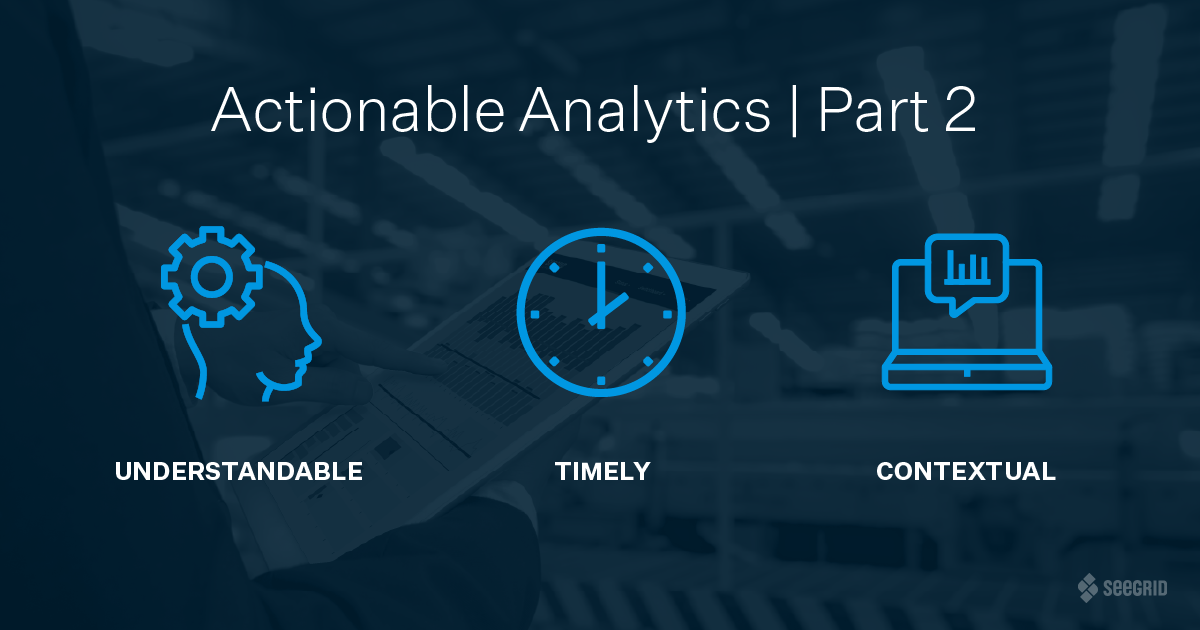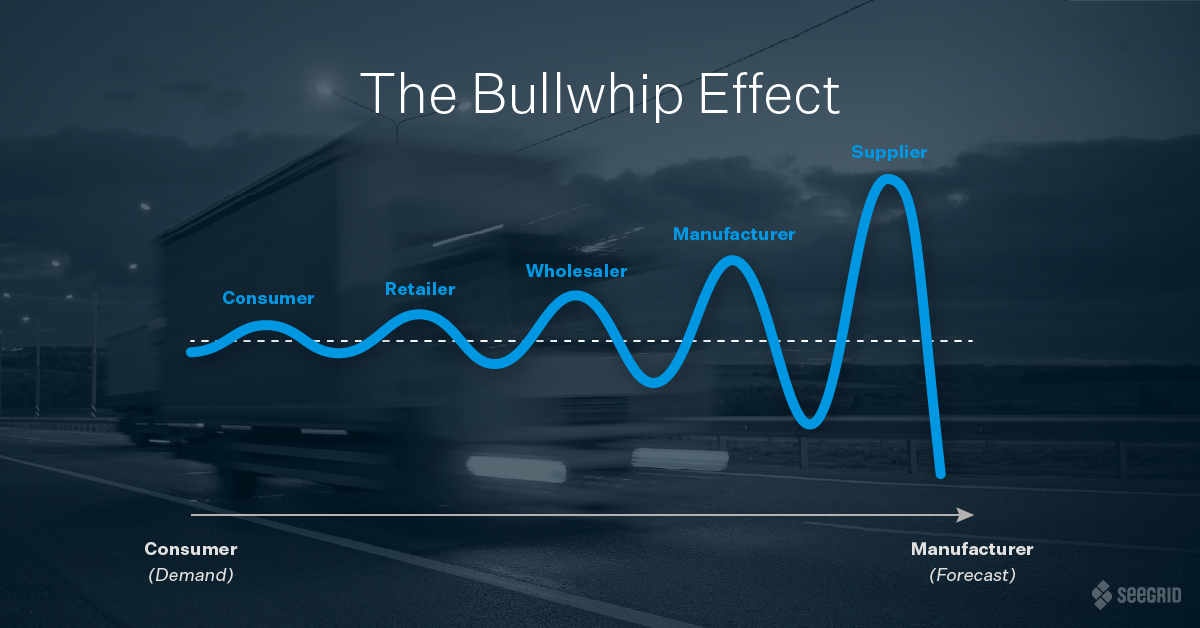Learn How to Deliver Data that Drives Results
Consumers want products faster, better, and at low cost, driving the material handling sector to become more competitive. Because of this, forward-thinking companies are seeking ways to implement advanced technologies to improve accuracy, accelerate productivity, and reduce costs.
Entire manufacturing and distribution facilities have become interconnected with the implementation of smart automation technology. This makes it possible to gather and analyze data across material handling equipment to achieve more efficient processes and increase profitability. As the trend towards Industry 4.0 continues to advance, the amount of data available is only growing. These streams of data typically arrive from several sources and are presented in a variety of formats–adding to the complexity of information flowing through modern facilities.
Material handling technologies, like Seegrid Palion autonomous mobile robots (AMRs) and automated guided vehicles (AGVs), constantly collect data with every movement. However, simply harvesting robust amounts of data isn’t useful. When trying to ensure that data is impactful and actionable, instead of focusing on the quantity and complexity of the data being collected, what really matters is the depth of understanding the data.
In one of our previous blog posts, 3 Pillars to Achieve Data Goals for AMRs and Material Movement, we introduced a framework to help form actionable analytics that drive real results. Below, we put the 3-pillar system into motion to achieve common operational efficiency goals for supply chains using data.
Increase Throughput and Reduce Downtime with AMR Data
With the responsibility for improving the overall efficiency of material handling facilities, operations managers typically have key performance goals and expectations around increasing throughput while reducing downtime. Operations managers need to take a proactive approach, getting ahead of issues before they occur, while creating a holistic understanding of the entire facility. Unfortunately, with so many systems, processes, pressures, and other variables at play while production is running, it’s easy to become bombarded and consumed with too much information to decisively make improvements.
Through the implementation of autonomous mobile robots (AMRs) and fleet management software, the equipment, bottlenecks, downtime, deliveries, and other key components can be tracked, monitored, and quickly adapted. Not only can an operations manager compare operational efficiencies before and after adopting AMRs, but they can also make improvements based on real-time data for immediate results.
However, if this information isn’t handled and presented effectively, it becomes difficult to determine where to begin, putting improvements on the backburner. Simply collecting extensive data in a report and displaying it on a bulletin board each month doesn’t help a facility achieve goals or advance initiatives. Here, we outline next steps to turn this data report into distinct actions for impactful operational improvements.
3 Pillars to Drive Results for Material Handling Data
Pillar #1: Understandable Data
Ensure your data is understandable by those who will be taking action.
The first step is to ensure the data is understandable to those directly involved in the process that will be taking action. It is key that only the metrics that help solve the problem at hand are being communicated and nothing more. By stripping down the data to represent specific metrics, you can hone in and better understand root issues that could improve by making adjustments when given the right attention.
For example, if an operations manager is tracking the timing of AMRs or AGVs in the plant—monitoring if robots are arriving early, late, or on time to the assigned positions—the information should be presented to the employees directly involved in the process surrounding the AMRs or AGVs. For the data itself, all other metrics outside of the AMR or AGV timing data points should be hidden. Enable the recipients of the information to quickly and easily understand the takeaways.
Pillar #2: Timely Data
Ensure data is delivered within the time frame in which action needs to be taken.
Once the data is streamlined and condensed to reflect only the pertinent information, it’s crucial that the data is made available within the timeframe of actions being taken. Receiving information too early or too late could render it useless, ultimately wasting time and resources on compiling the data.
In the example of tracking the timing of the AMRs, the information is being captured in real-time, collecting data with an immediate focus. Though data can be consolidated to display comparative metrics, like shift-by-shift, daily, or weekly performance, for this application, a real-time flow of data is the most beneficial for the employees involved in the process. With this, instead of pulling the data to analyze at a later time, the information needs to be presented immediately. This real-time stream of information allows the employees involved in the process to quickly address issues and make adjustments without delay.
Pillar #3: Contextual Data
Information needs to be delivered in a way that doesn’t disrupt the normal flow of work.
Last, the information needs to be delivered in a way that doesn’t disrupt the normal flow of work. When presenting data, always keep the recipient of the information in mind. Try to identify methods of displaying the information that won’t add additional steps to their process or require additional work to obtain the information.
For the example of tracking AMR timing, instead of posting a printed report at the front of the plant each day that displays a summary of the accomplishments, the operations manager could mount tablets that are visible to the employees while they are working. The tablets would display the real-time status of the AMRs within the process, much like a departure board at an airport. This presentation method is natural, easy, and requires no additional actions to view and digest the information. If the tablet shows that a robot is late, an employee will immediately know and address the issue that is causing the delay.
Drive Data that Yields Results Today—And Tomorrow
Not only does an understanding of data help in optimizing during production, but it also helps operations managers proactively plan based on developing trends. With actionable data supporting your goals, errors can be detected before they occur. Operations managers can decipher trends in the data to anticipate problem areas, detect bottlenecks, and resolve issues as part of continuous improvement efforts.
Additionally, when visibility is broadened, every stakeholder—from operators to management—has increased understanding of the facility’s performance and efficiencies to drive increased profitability and a collaborative environment. Distinct, confident actions can be made to correct and improve workflows when the right visibility is achieved.
As supply chain challenges and consumer demands continue to rise and become more complex, pressures also amplify for companies to identify methods that allow them to quickly adapt, optimize, and gain a competitive edge. Instead of spending time and resources on crunching numbers, focus on achieving the end goal. Deliver data that is easy to understand, provide the information in time to facilitate impactful improvements, and share it in an efficient manner. The focus should be on finding a solution to a problem.
Companies can achieve success by pairing automation with actionable analytics for boosted profitability, higher throughput levels, increased safety, enhanced flexibility, and reduced operating costs. Whether an automation solution is providing data to make faster decisions or providing different kinds of reliable data that wasn’t previously available, supply chains can confidently optimize, solve problems, take advantage of new opportunities, innovate processes, and advance efforts with actionable analytics.
Check out part 3, the conclusion of our Actionable Analytics Series, where we provide details on how to create an agile operation to efficiently overcome day-to-day challenges and unexpected disruptions, no matter the cause, by using actionable analytics. Make sure to subscribe to the Seegrid blog for up-to-date articles and notifications.






